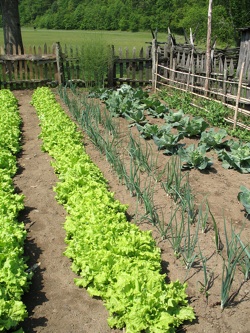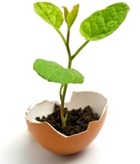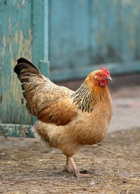How to Homestead
Homestead Living Strategies
How to Homestead - Getting started tips for homestead living on your property. Simpler, gentler, quieter, backwards is the new forward.
How to Homestead

Thinking of homesteading but not sure where to start?
It's the family farm life, except on a smaller scale so get out the gum boots.
Evaluating your resources will give you a good idea where to begin and help you to determine which of the following tips will work best for you.
The best advice for beginning a successful homesteading venture is, start small; small house, small garden, small footprint. As you establish yourself, add more complexity if you want, but for the first year (through every season) keep it simple. After 12 months you'll have a good grasp on where you want to go from there.
First, you Garden
To me, the homestead begins with a vegetable garden. Even in a limited space you can grow a wide variety of vegetables in containers and if you have more room try raised bed gardening or simply plant rows of vegetables in a big plump pile of unrestrained soil. Check out our organic gardening tips and strategies for getting started.
The amount of room available to you will largely determine the size of your garden but the homesteading supplies you'll require will be similar regardless of the size of the area.
If you'll be growing a large garden that produces more than you can eat while its fresh, consider how you'll preserve the excess; root cellar, canning, dehydrating or freezing or a combination of them. Alternatively, extra vegetables or fruits can be sold at farmer's markets or bartered for something your homestead doesn't produce.
Then, you Compost - How to Homestead

Your garden will produce a lot of clippings, leaves and foliage that can be composted into a yummy growth medium for next year's garden. If you have lots of room, a compost pile can be just that, a pile of compost that is periodically turned. More elaborate composters can be made or bought, the size you need will depend on the size of your garden. Compost tumblers have become increasingly popular for backyard farms because of their compact size and rapid decomposition capabilities.
Manage Water
Harvesting rainwater from rooftops saves on your water bill and plants and trees LOVE it. Rainwater is ideal for plant irrigation and livestock watering and it's as simple as directing the rainwater from your roof into a rainbarrel.
Check local ordinances, rainwater diversion is prohibited in some areas.
Add some Critters

Adding a few chickens, ducks or rabbits yields protein in the form of eggs and meat. A family goat (Nigerian dwarf goats are small but mighty) or cow produces milk that can be further processed into yogurt, cheese and butter. Chickens, goats and cows also produce a valuable "end product" to add to your compost. Their manure will further enrich next year's crops.
Bees are fairly easy to keep, quiet and only need a small amount of space. A welcome addition to any neighborhood, bees pollinate crops and fruit trees and produce honey, wax and pollen.
Homestead Living in the City
The new kid on the block is the urban homesteading movement that's seeing city and suburb dwellers creating their own eco circle in the back yard or even on the roof. Vegetable gardens, systems for harvesting rainwater, garden composters, bee hives, even laying hens, are making an appearance while urbanites reconnect with their planet.
In Conclusion - How to Homestead
Much of homesteading revolves around food (as does life). The growing and preserving and recycling (through composting) of vegetables, fruits and berries is a logical place to begin any homestead venture. Start small and add dimensions as you feel comfortable. You'll pick up the necessary skills along the way.
For the scoop on homesteading delivered in a relaxed and lighthearted style get Make Your Place: Affordable & Sustainable Nesting Skills. While telling it all, this book gets the juices
flowing and the imagination circling.
Develop a long term plan for layering one aspect of homesteading over another and in a few years you'll have an intricate, symbiosis right in your yard.
Visitors to our How to Homestead page may also be interested in the following pages.
Homesteading Today





